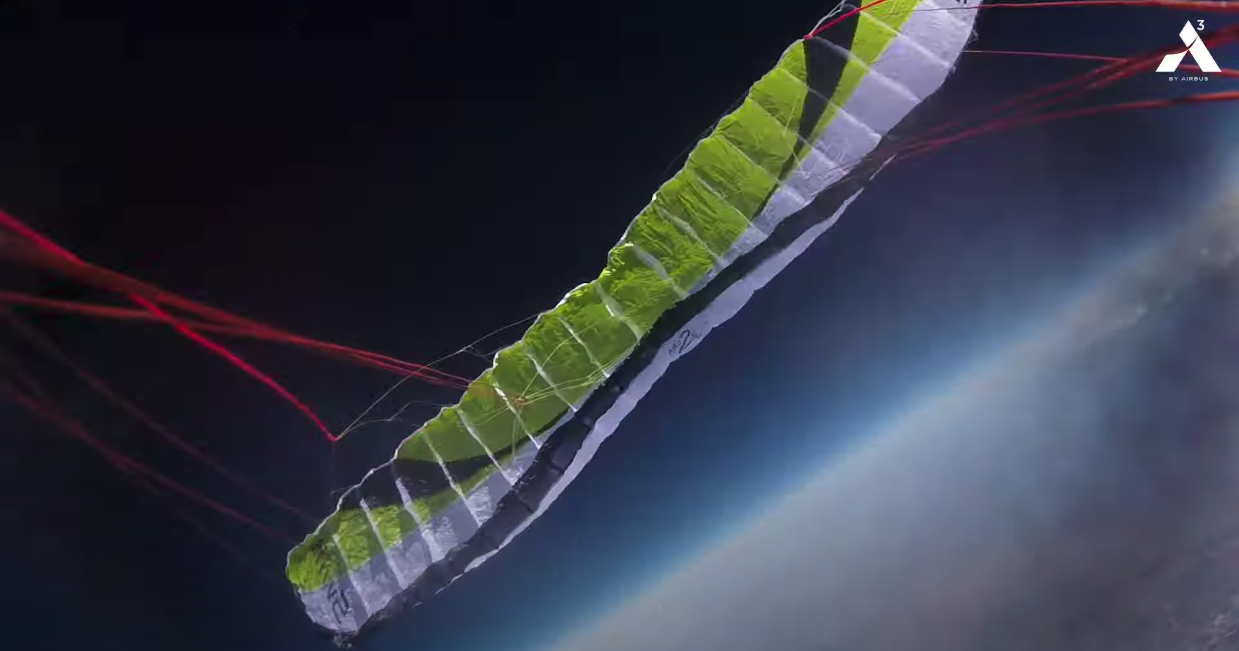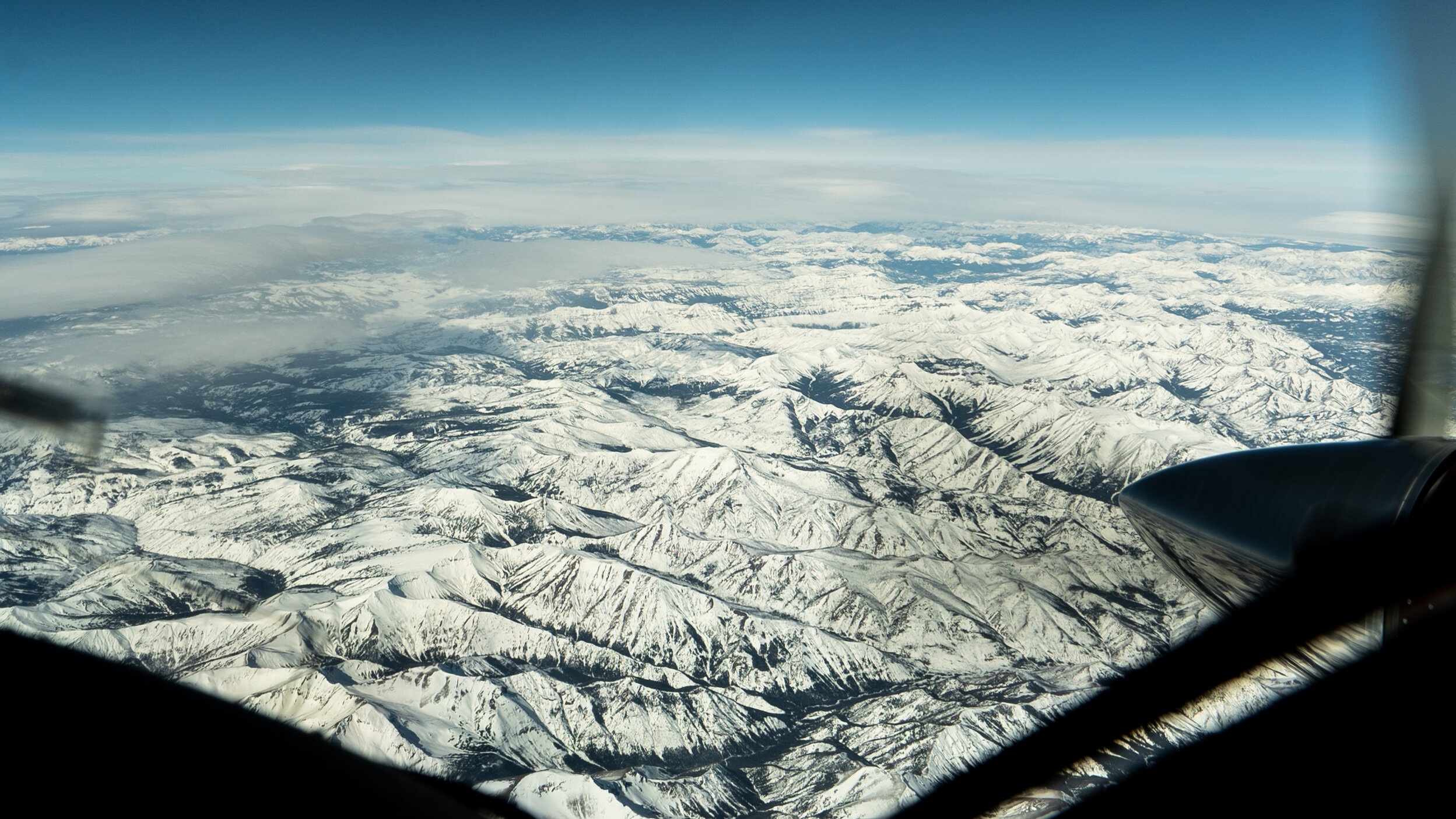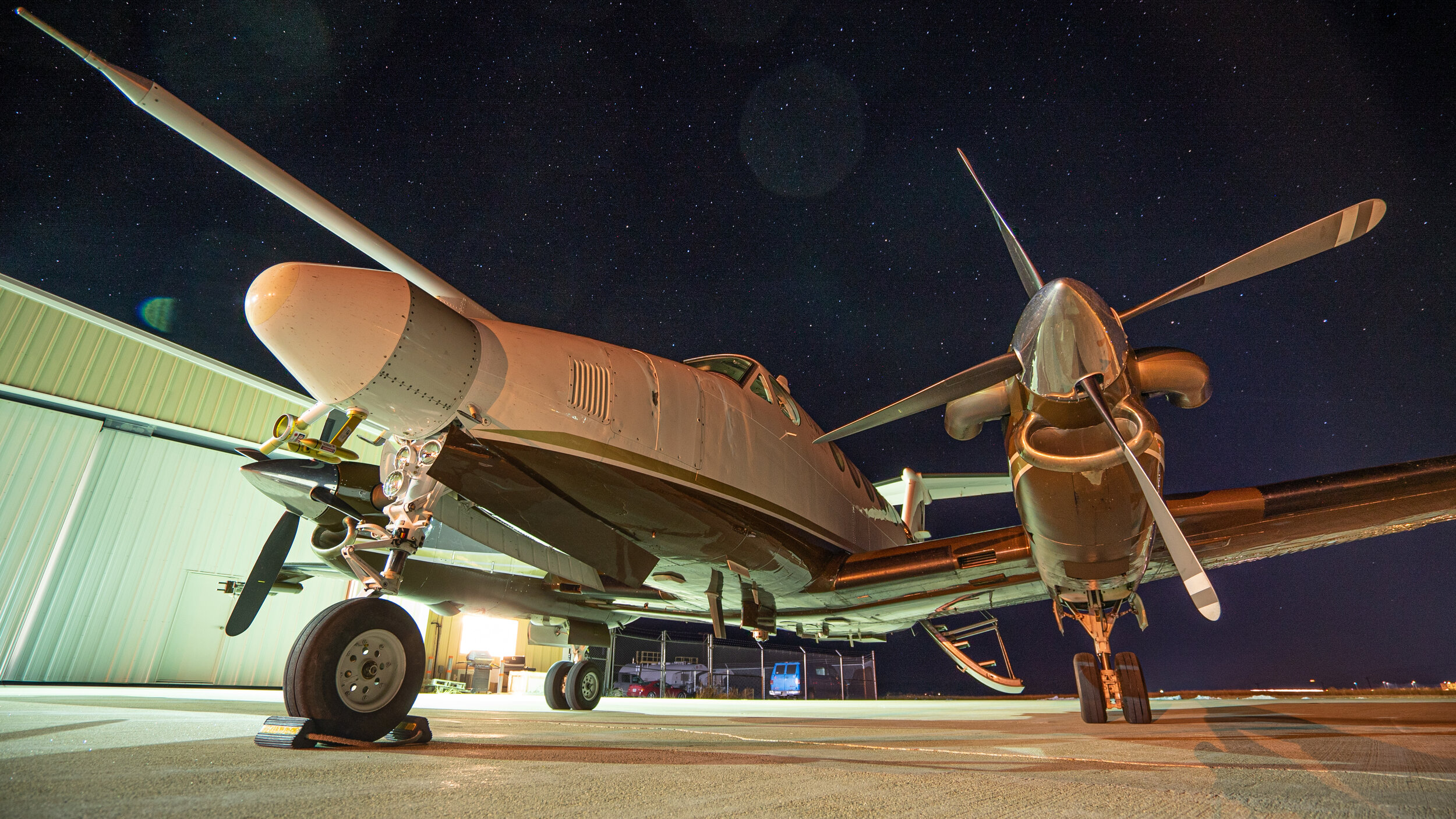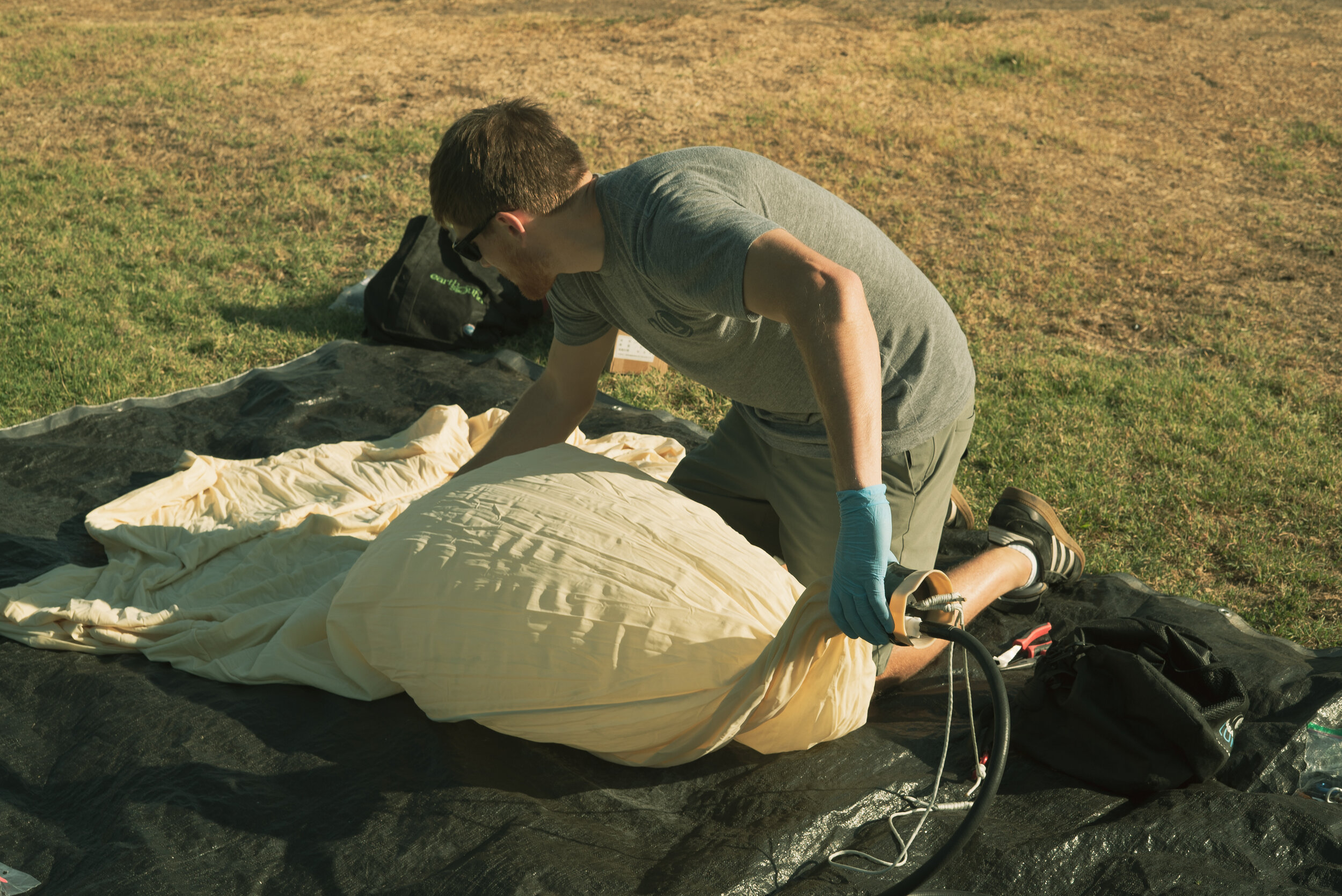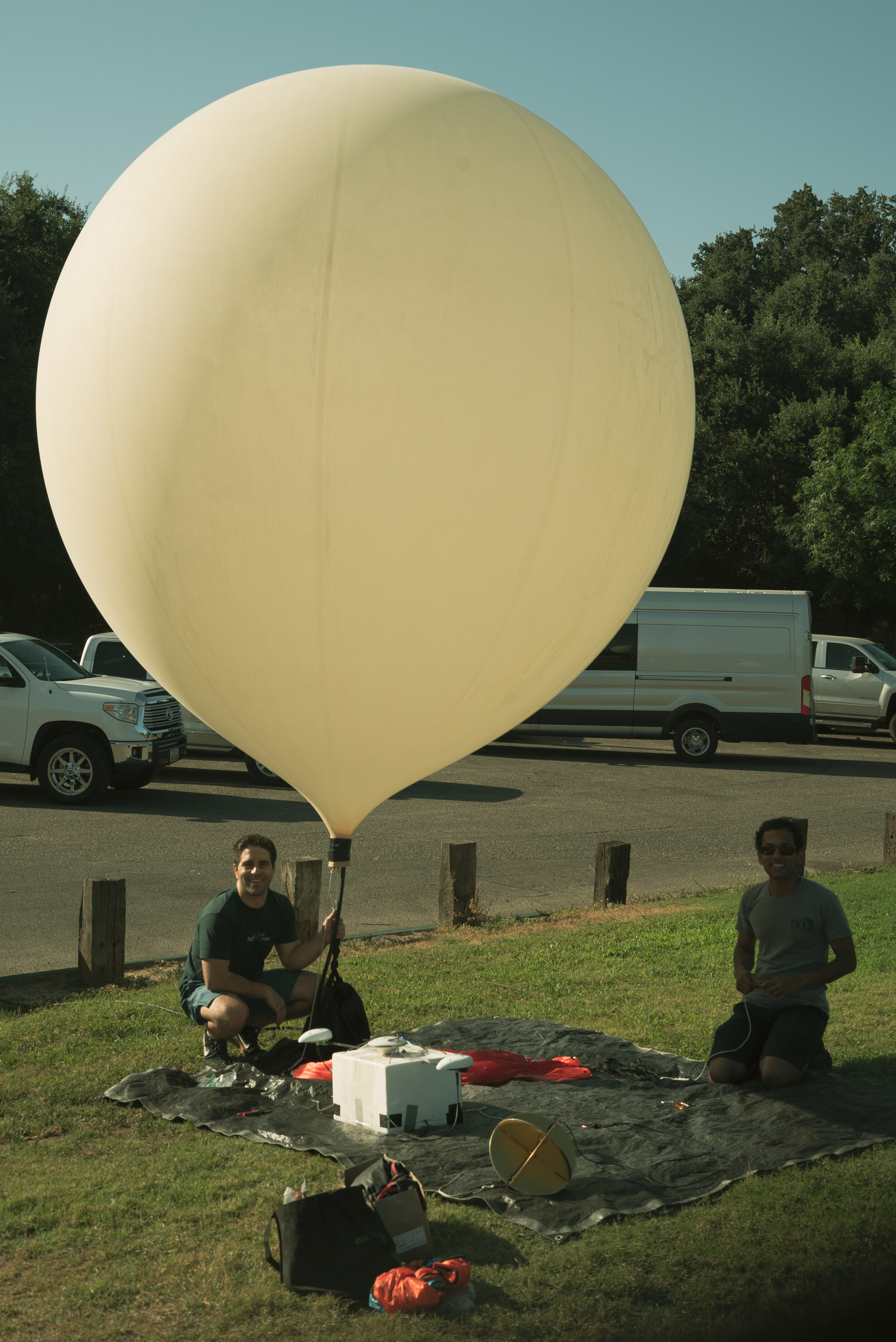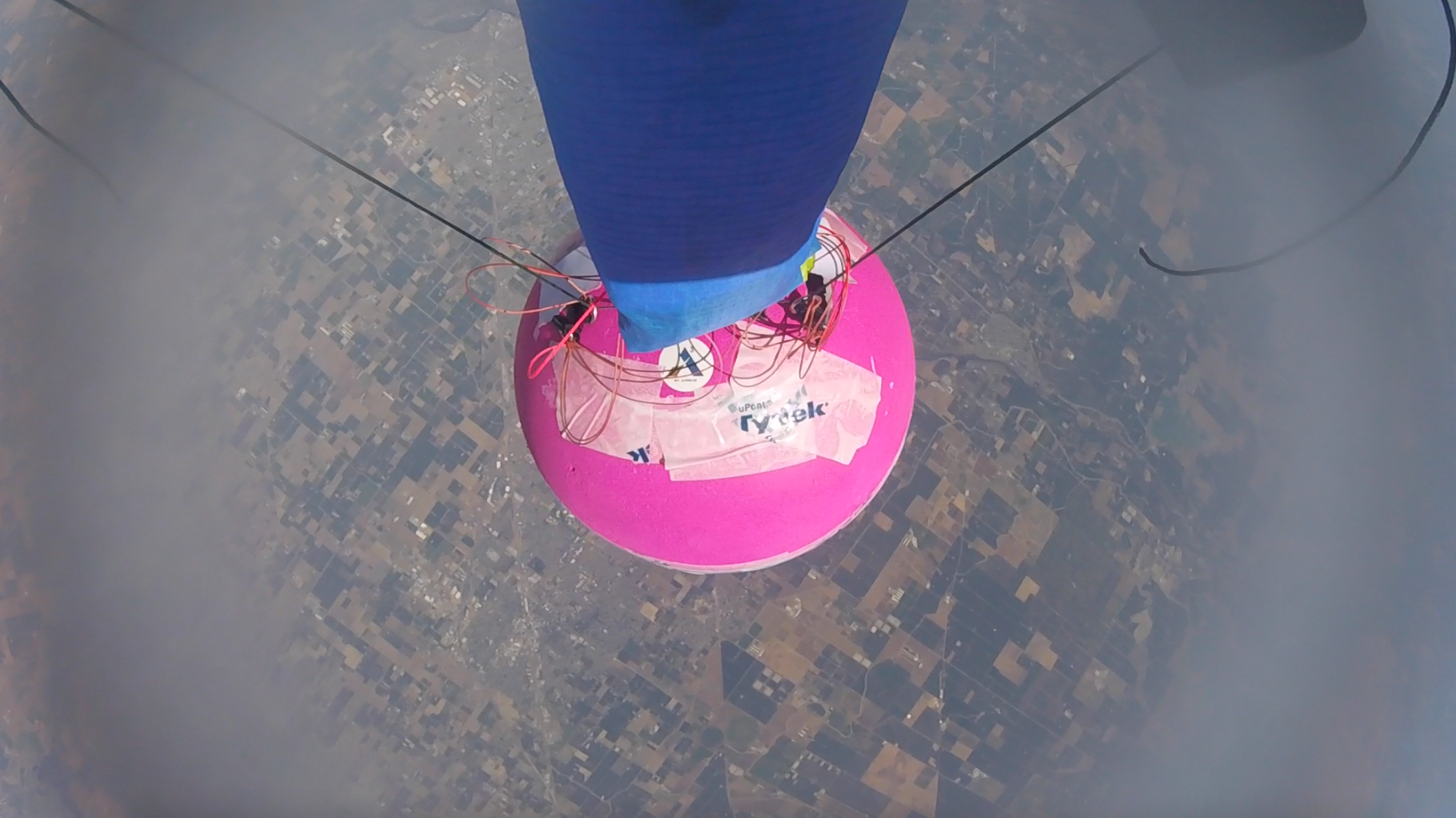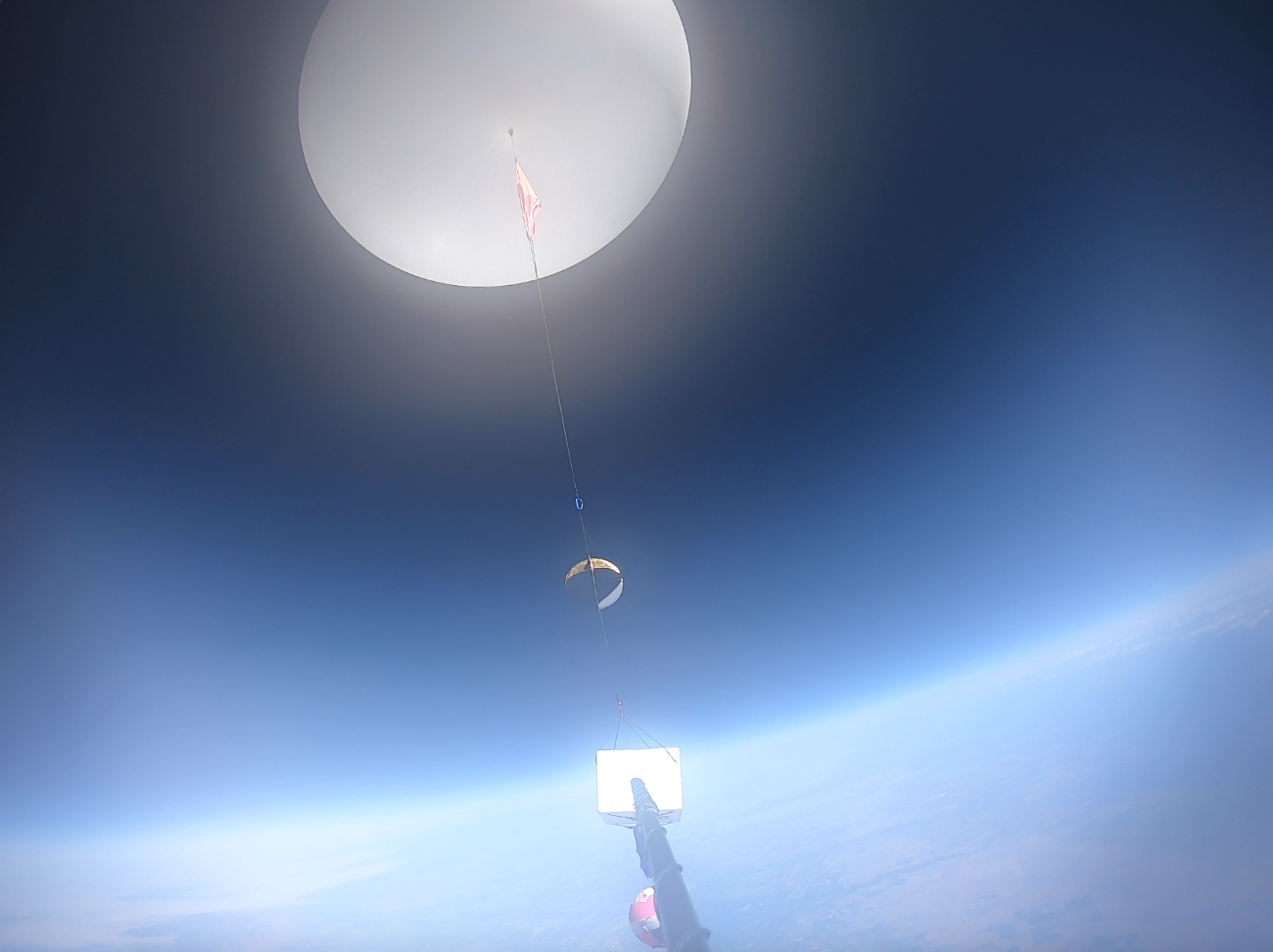March 2019 to May 2020 – NCL worked with Acubed, Airbus’ Silicon Valley research and development arm, on improved weather sensing on a variety of atmospheric platforms.
Through an effort with Acubed and Project Monark, we demonstrated that new sensing technologies (i.e. GPS radio occultation) can use heritage equipment on commercial aircraft to directly improve weather forecasts. In other words, by applying software algorithms on existing datasets, previously unused GPS data was shown to be valuable. This was demonstrated by analysis of past Airbus A330 data, and then by test through a flight campaign held in Laramie, Wyoming in February 2020.
In addition, NCL launched two weather balloon flights in supporting Monark’s goal of showcasing autonomous robots monitoring our atmosphere. NCL lifted a robotic paragliding dropsonde to 18 km in altitude and released it, whereby the robot initiated a set of gliding maneuvers as it fell. You can see flight footage from Acubed’s video here.
Our hope and anticipation is that GPS radio occultation data collection will become commonplace on commercial aircraft. NOAA is making large scale commitments for this type of measurement in the coming years.
Project Monark was an initiative founded on the belief that by Airbus’ large-scale flight platforms and sensor data could be leveraged to vastly improve weather data input and generate highly valuable weather insights.
You can watch NCL’s mission video below.

